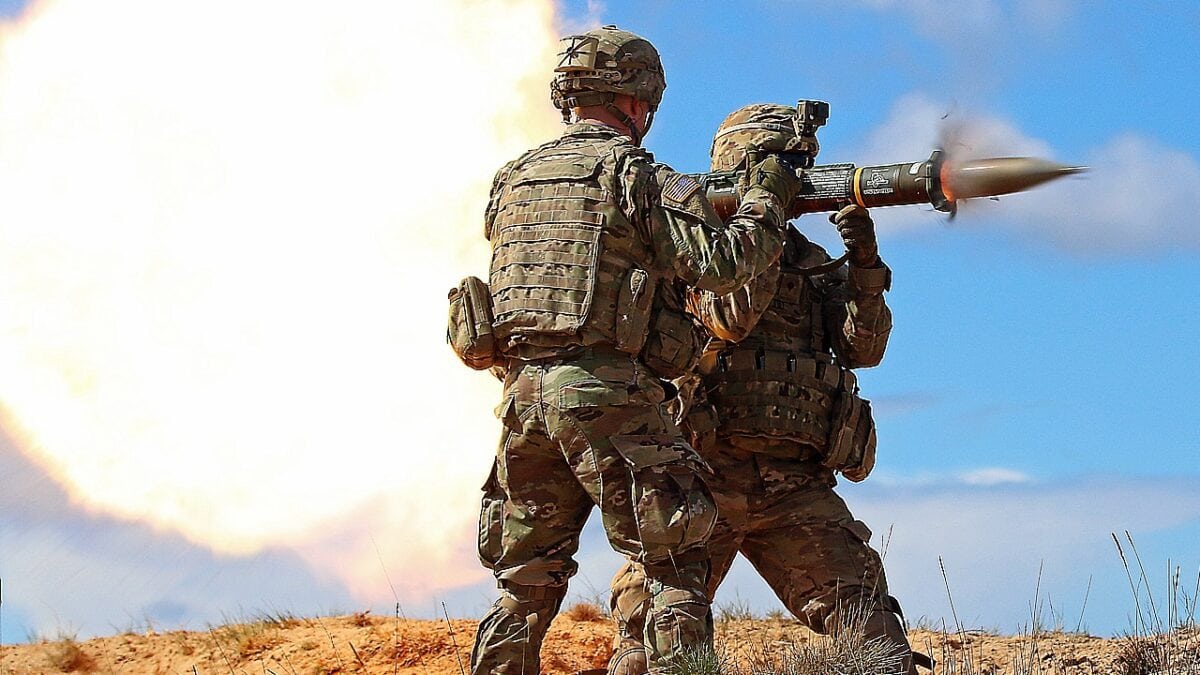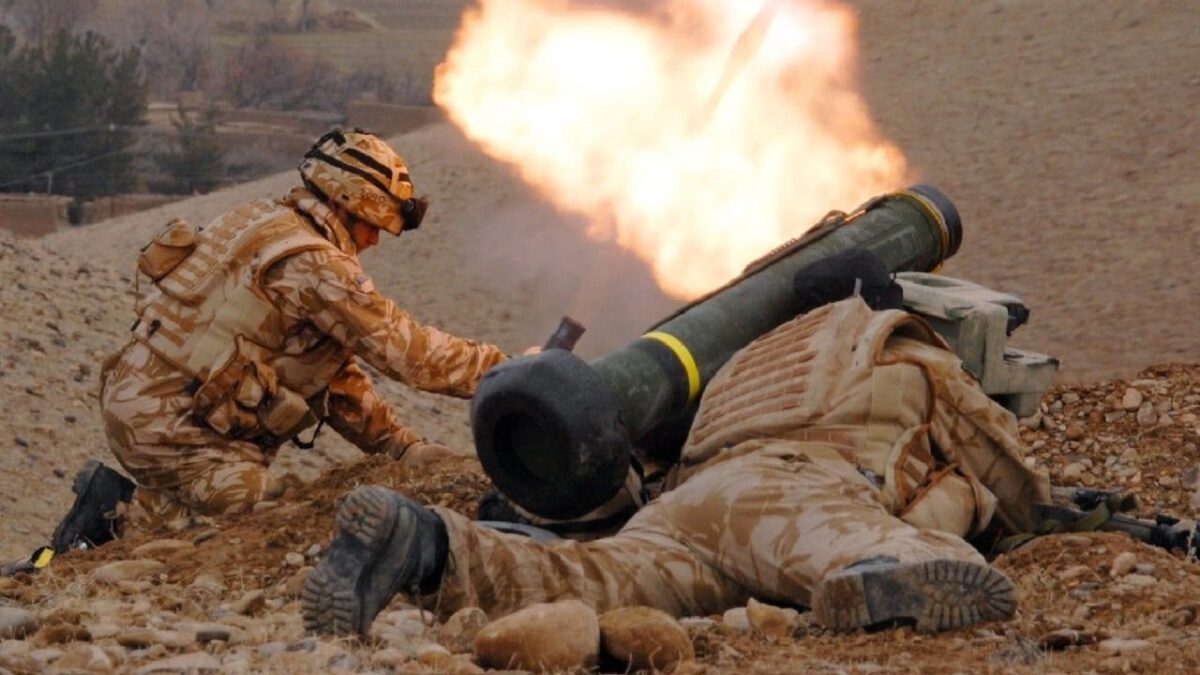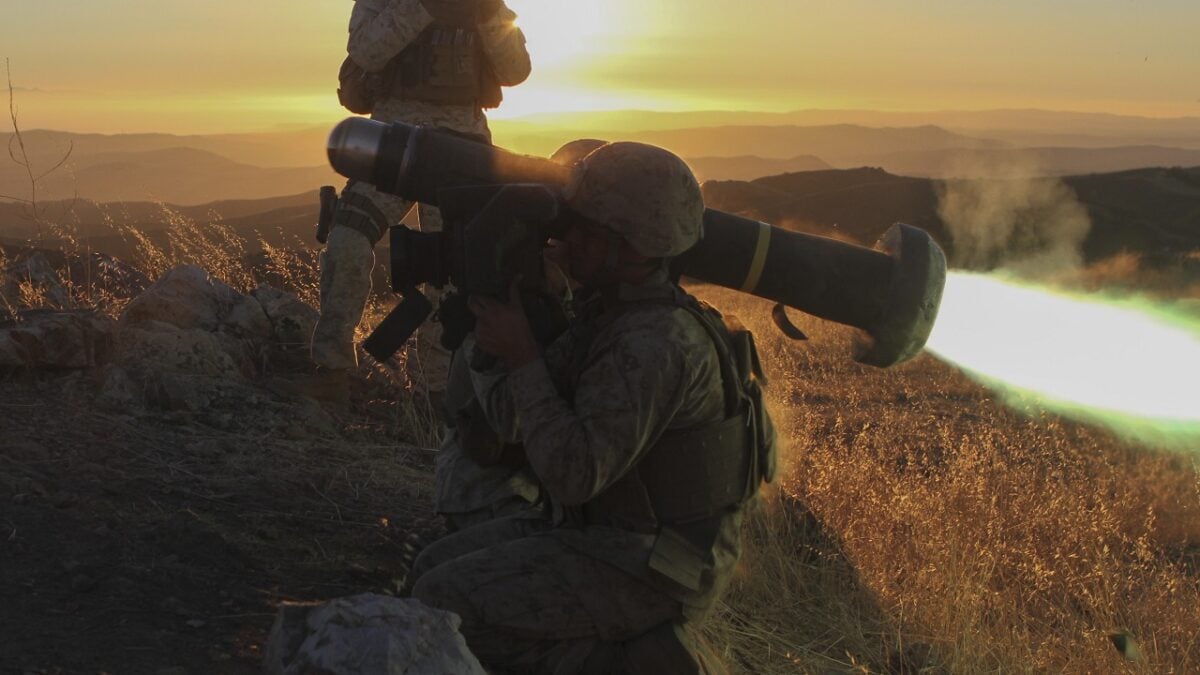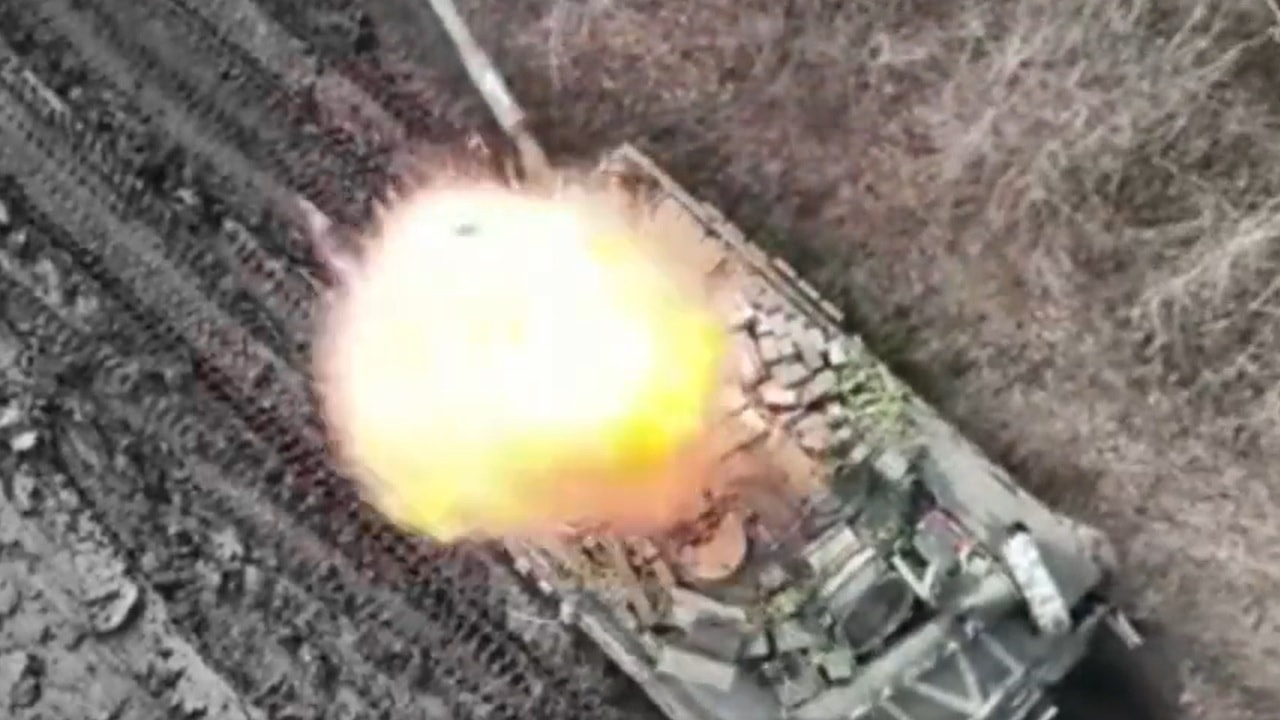The war in Ukraine is very much back in the news – and always in the news – as hundreds of thousands of men and women have tragically died in the conflict.
What many thought would be a quick invasion and victory for Putin instead became a war of attrition.
What will happen next? We know that we can see a lot of action and fighting thanks to the rise of social media.
Annihalted Armor in Ukraine
Twitter user Special Kherson Cat, who describes themself as someone who fled from their hometown of Kherson, Ukraine, has posted a telling piece of combat footage from the Russo-Ukraine War.
What We Can See
In the video, posted initially on TikTok by @mukavahujoppi back in March, a Russian tank can be seen (from a high-altitude perspective) maneuvering near buildings (presumably in Kherson).
The in-video caption reads “a russian tank fires in our direction, and then …” suggesting that the tank is firing.
I cannot tell from the video if the tank is indeed firing, but what is evident from the video is that the tank is being fired upon.
The tank reacts accordingly and “bugs out,” retreating from the buildings to flee through a nearby field.
The evasive maneuvering is of no use, however.
Very suddenly, the tank explodes, and a column of grey smoke rises from view in the video. The tank sits, immobilized in the field. Presumably, the tank has been destroyed.
What Destroyed the Tank?
According to Special Kherson Cat’s caption, a Javelin was used to destroy the tank.
“Russian tank unsuccessfully tries to run away from the Javelin,” the caption reads.

Spc. Chengjie Liu (right), fires an AT-4 anti-tank weapon as Sgt. Jacob Saccameno, both infantrymen assigned to Headquarters and Headquarters Troop, 3rd Squadron, 2nd Cavalry Regiment, supervises and assists during an anti-tank and air defense artillery range, April 23, at Adazi Military Base, Latvia. American and Latvian soldiers trained using a variety of weapons, including Javelin anti-tank missiles, Carl Gustav recoilless anti-tank rifles and the RBS-70 Short-range air defense laser guided missile system. Soldiers from five North Atlantic Treaty Organization nations, including Canada, Germany and Lithuania, have been conducting a variety of training together during Summer Shield XIII, an annual two-week long interoperability training event in Latvia. (U.S. Army photo by Sgt. Paige Behringer)

Javelin anti-tank missile being fired along with a mortar. Image credit: UK government.

A Marine with Weapons Company, 1st Battalion, 4th Marine Regiment, fires an FGM-148 Javelin during a TOW battle drill aboard Camp Pendleton, Calif., Aug. 28-29, 2014. The Marines were performing basic TOW drills using live fire and maneuver to ensure they were ready for future deployments.
The FGM-148 Javelin, or Advanced Anti-Tank Weapon System-Medium, is an anti-tank system that one person can conveniently carry, making it super portable.
Made in America, the Javelin has been in service for nearly three decades.
More on the Javelin
The Javelin entered service in 1996, replacing the M47 Dragon, which was a basic system relative to the Javelin. Whereas the Dragon used a wire-guided tracking system, the Javelin relies upon an infrared guidance system that can track a target’s (in this case the Russian tank’s) light emissions.
The beauty of the infrared guidance system is that it operates as a “fire and forget” device, meaning the operator doesn’t have to sit (potentially in a dangerous position) while the missile he has already fired tracks its target all the way to impact (which is what a Dragon operator was required to do). Instead, with the infrared guidance system, the operator can fire the missile – and then immediately seek cover.
One of the Javelin’s more advanced features is its ability to operate with two different flight profiles.
First, is the top-attack flight profile, in which the Javelin attacks armored vehicles from above (where armor is commonly at its weakest).
In top attack mode, the missile climbs sharply immediately after being launched, to a peak altitude of 490 feet, before descending on its target from above.
Presumably, the Javelin in Special Kherson Cat’s video used the top-attack mode, which is the standard mode for attacking armored vehicles.
Second, the Javelin can be used in direct-attack mode, which is what it sounds like: the Javelin flies straight from launcher to target. Direct attack is most commonly selected against helicopters or fortifications.
Russians losing thousands of tanks
One of the more remarkable statistics coming from the Russo-Ukraine War is the rate at which Russia is losing tanks and armored vehicles.
According to Ukraine (whose numbers are likely inflated), Russia has lost 3,532 tanks.
Russian tank unsuccessfully tries to run away from the Javelin pic.twitter.com/YbPuOEpk5L
— Special Kherson Cat ???????????? (@bayraktar_1love) March 20, 2023
Less partisan sources (like Dutch outlet Oryx) count Russia’s tank losses at just below 2,000. Whatever the exact number, the pattern is clear: Russia is losing tanks at an unsustainable rate. As the International Institute for Strategic Studies estimates, Russia lost 50 percent of its pre-war tank fleet in just the first nine months of fighting.
The Special Kherson Cat video is representative of Russia’s significant tank attrition problem.
Harrison Kass is the Senior Editor at 19FortyFive. An attorney, pilot, guitarist, and minor pro hockey player, Harrison joined the US Air Force as a Pilot Trainee but was medically discharged. Harrison holds a BA from Lake Forest College, a JD from the University of Oregon, and an MA from New York University. Harrison listens to Dokken.
From 19FortyFive
PAK DA – Is Russia New Stealth Bomer a Joke?

